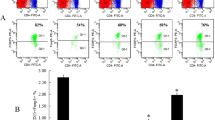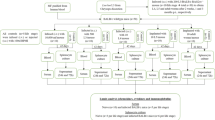Abstract
Resistance of BALB/c mice to infective thirdstage larvae (L3) of the human filarial parasiteBrugia malayi is thymus-dependent, although the actual, effector mechanisms that mediate larval killing are unknown. The present study examined the effect of carrageenan (CGN) on the mechanisms of resistance toB. malayi infection in heterozygous (nu/+) and nude (nu/nu) mice. Mice were treated with CGN at a single dose of 20 or 200 mg/kg and were inoculated intraperitoneally 1 day later with 100 L3. The results showed a dose-dependent increase in the numbers of L4 and L5 that were recovered from nu/+ and nu/nu mice. CGN treatment also enhanced the recovery of mature adult worms from nu/nu mice and appeared to abolish partially the dichotomy of resistance between the usually more susceptible male and the more resistant female nu/nu mouse. Microfilariae were found in the peripheral blood and the peritoneal cavity of CGN-treated male and female nu/nu mice and in the peritoneal cavity of male but not female nu/+ mice. Fewer larval granulomas were recovered from the peritoneal cavity of treated mice. CGN-treated, parasitized nu/+ and nu/nu mice showed high titers of IgM and IgG antibodies. An experimental compound, CGP 20376, showed 100% larvicidal activity following the administration of a single dose of 20mg/kg to CGN-treated mice. From this study, we conclude that macrophages alone or in conjunction with other cells are actively involved in the resistance of mice toB. malayi L3.
Similar content being viewed by others
References
Allison AC, Harrington JS, Birbeck M (1966) An examination of the cytotoxic effects of silica on macrophages. J Exp Med 124:141–153
Aschheim L, Raffel S (1972) The immunodepressant effect of carrageenin. J Reticuloendothel Soc 11:253–262
Borsos T, Rapp HJ, Crisler CJ (1965) The interaction between carrageenan and the first component of complement. J Immunol 94:662–666
Carlow CKS, Philipp M (1987) Protective immunity toBrugia malayi in BALB/c mice: potential of this model for the identification of protective antigens. Am J Trop Med Hyg 37:597–604
Catanzaro PJ, Schwartz HJ, Graham RC (1971) Spectrum and possible mechanism of carrageenan cytotoxicity. Am J Pathol 64:387–399
Crewter P, Warner NL (1972) Serum immunoglobulins and antibodies in congenitally athymic (nude) mice. Aust J Exp Biol Med Sci 50:625–635
Damas J, Volen G (1980) Leucocytes, prostaglandin and carrageenan. Arch Int Pharmacodyn Ther 246:167–169
Davies GE (1965) Inhibition of complement by carrageenan: mode of action, effect on allergic reactions and on complement of various species. Immunology 8:291–299
Denham DA, Midwinter ITC, Shipley MJ (1990)Brugia pahangi adults implanted into mice: a possible screen for filaricidal activity. Trop Med Parasitol 41:223–229
Devaney E, Howells RE, Smith G (1985)Brugia pahangi in the BALB/c mouse: a model for testing filaricidal compounds. J Helminthol 59:95–99
Fruhman GJ (1973) Peritoneal macrophages in male and female mice. J Reticuloendothel Soc 14:371–379
Furman A, Ash LR (1983) Parameters influencing the susceptibility of neonate mice to infection withBrugia pahangi. J Parasitol 69:1038–1042
Holub M (1989) Immunology of nude mice. CRC, Florida
Howells RE, Devaney E, Smith G, Hedges T (1983) The susceptibility of BALB/c and other inbred mouse strains toBrugia pahangi. Acta Trop (Basel) 40:341–350
Jeffers GW, Klei TR, Enright FM (1984) Activation of jird (Meriones unguiculatus) macrophages by the filarial parasiteBrugia pahangi. Infect Immun 43:43–48
Lebrun P, Spiegelberg HL (1987) Concomitant immunoglobulin E and immunoglobulin G1 formation inNippostrongylus brasiliensis-infected mice. J Immunol 139:1459–1465
Mackenzie CD, Oxenham SL, Liron DA, Grennan D, Denham DA (1985) The induction of functional mononuclear and multinuclear macrophages in murine brugian filariasis: morphological and immunological properties. Trop Med Parasitol 36:163–170
McCall JW, Malone JB, Ah HS, Thompson PE (1973) Mongolian jirds (Meriones unguiculatus) infected withBrugia pahangi by the intraperitoneal route: a rich source of developing larvae, adult filariae and microfilariae. J Parasitol 59:436
Nakanishi H (1987) Difference in the susceptibility toBrugia pahangi infection between male and female BALB/c mice: differences of effector cell responses between sexes. Trop Med 29:153–163
Nakanishi H, Horii Y, Terashima K, Fujita K (1989) Effect of macrophage blockade on the resistance to a primaryBrugia pahangi infection of female BALB/c mice. Trop Med Parasitol 40:75–76
Oxenham SL, Mackenzie CD, Denham DA (1984) Increased activity of macrophages from mice infected withBrugia pahangi: in vitro adherence to microfilariae. Parasite Immunol 6:141–156
Palanivel V (1987) Modulation of murine anti-SRBC response by carrageenan: possible mechanism. Immunol Lett 15:335–339
Rose FV, Cebra JJ (1985) Isotype commitment of B cells and dissemination of the primed state after mucosal stimulation withMycoplasma pulmonis. Infect Immun 49:428–434
Ryan GB, Spector WG (1969) Natural selection of long lived macrophages in experimental granuloma. J Pathol 99:139–151
Stables JN, Lees GM, Rankin R (1988) The potential of mice as animal models for antifilarial screening. Trop Med Parasitol 39:25–28
Subrahmanyam D (1988) Antifilarials and their mode of action. In: Filariasis. (CIBA Foundation Symposium Series, vol 127) Wiley, Chichester, pp 246–264
Suswillo RR, Owen DG, Denham DA (1980) Infections ofBrugia pahangi in conventional and nude (athymic) mice. Acta Trop (Basel) 37:327–335
Suswillo RR, Doenhoff MJ, Denham DA (1981) Successful development ofBrugia pahangi in T-cell deprived CBA mice. Acta Trop (Basel) 38:305–308
Vickery AC, Vincent AL (1984) Immunity toBrugia pahangi in athymic nude and normal mice: eosinophilia, antibody and hypersensitivity responses. Parasite Immunol 6:545–549
Vickery AC, Vincent AL, Sodeman WA (1983) Effect of immune reconstitution on resistance toBrugia pahargi in congenitally athymic nude mice. J Parasitol 69:478–485
Vickery AC, Nayar JK, Albertine KH (1985) Differential pathogenicity ofBrugia malayi, B. patei andB. pahangi in immunodeficient nude mice. Acta Trop (Basel) 42:353–363
Vijayakumar RK, Muthukkaruppan VR (1989) Immunoregulatory processes induced by carrageenan in BALB/c mice. Immunol Invest 19:163–183
Vijayakumar RK, Muthukkaruppan VR (1990) Analysis of carrageenan-induced suppression of antibody response. Immunology 70:181–185
Vincent AL, Sodeman WA, Winters A (1980) Development ofBrugia pahangi in nude (athymic) and thymic mice C3H/HeN. J Parasitol 66:448
Vincent AL, Vickery AC, Lotz MJ, Desai U (1984) The lymphatic pathology ofBrugia pahangi in nude (athymic) and thymic mice C3H/HeN. J Parasitol 70:48–56
Voller A, Bidwell DE, Bartlett A (1976) Enzyme immunoassays in diagnostic medicine. Bull WHO 53:55–65
Yrios JW, Balish E (1986) Immune response of athymic and euthymic germ free mice toCampylobacter spp. Infect Immun 54:339–346
Author information
Authors and Affiliations
Additional information
Supported by research grant AI 20052 from the, NIAID (NIH). The senior author (U.R.R.) was supported by the filariasis component of the UNDP/World Bank/WHO program (project 870382). The results were presented in part at the 39th annual meeting of the American Society of Tropical Medicine and Hygiene, New Orleans, November 4–8, 1990
Rights and permissions
About this article
Cite this article
Rao, U.R., Vickery, A.C., Kwa, B.H. et al. Effect of carrageenan on the resistance of congenitally athymic nude and normal BALB/c mice to infective larvae ofBrugia malayi . Parasitol Res 78, 235–240 (1992). https://doi.org/10.1007/BF00931732
Accepted:
Issue Date:
DOI: https://doi.org/10.1007/BF00931732




